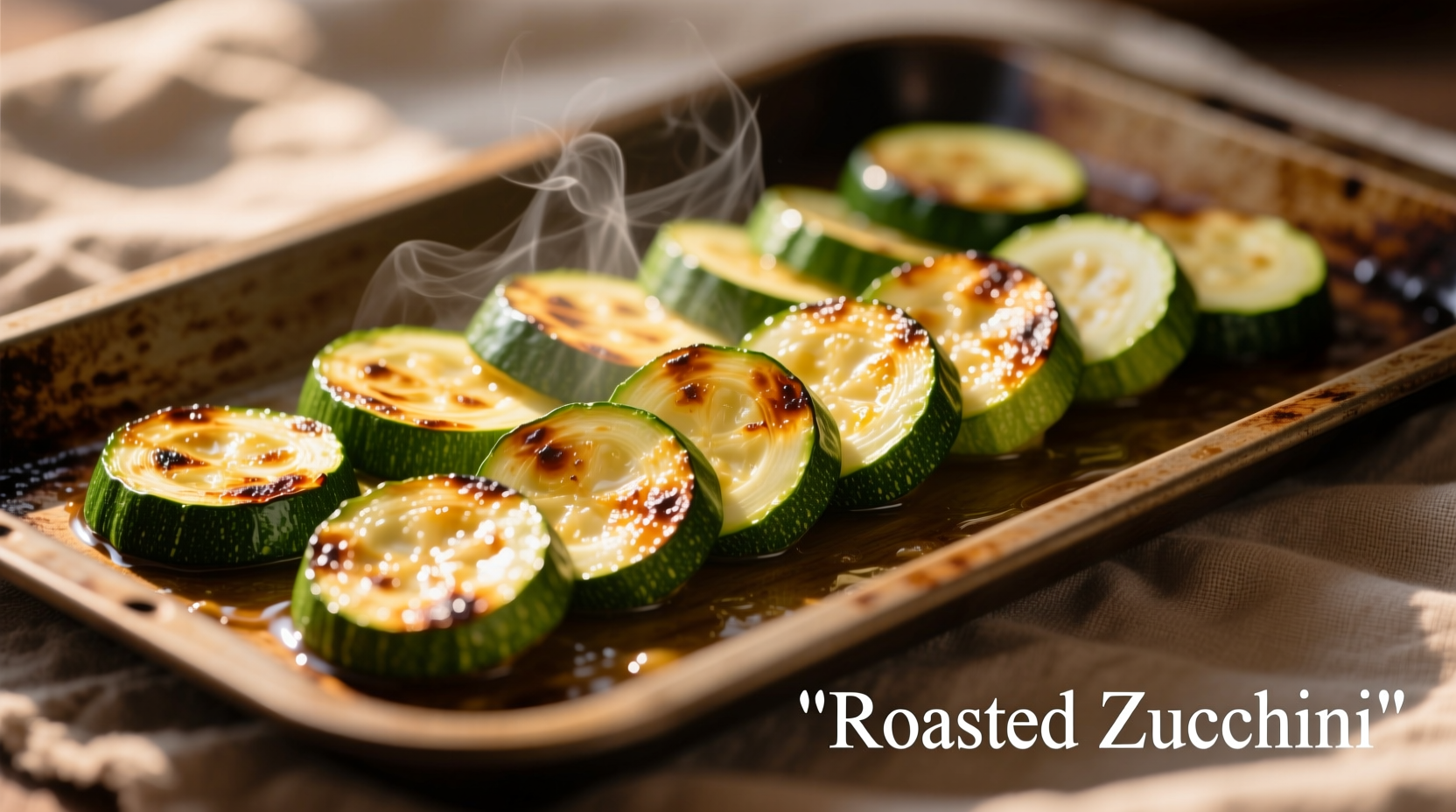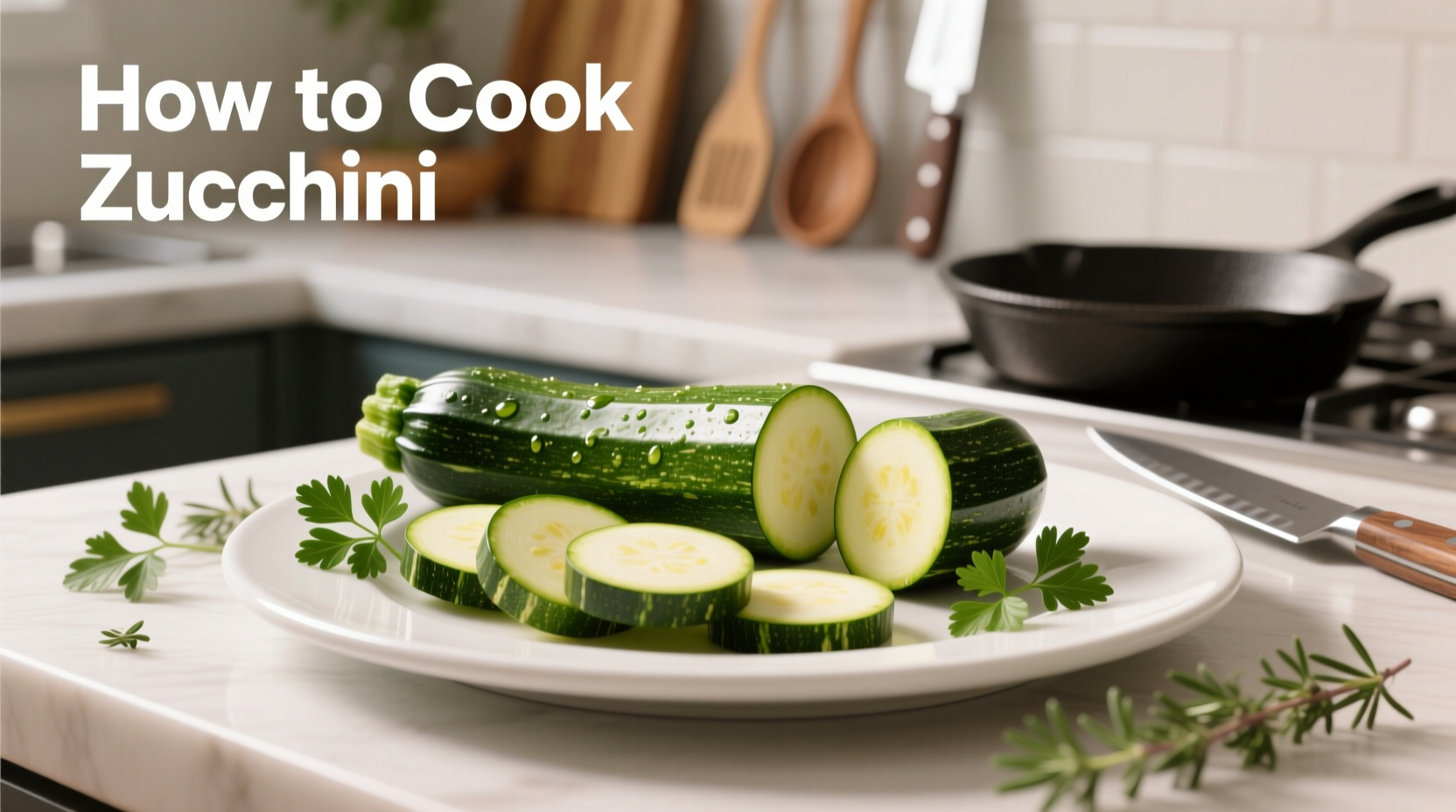
Selecting and Preparing Your Zucchini
Choosing quality zucchini is your first step to success. Look for firm, medium-sized specimens (6-8 inches long) with bright green skin and no soft spots. Smaller zucchini typically have fewer seeds and a sweeter flavor. Avoid oversized zucchini, which often contain large seeds and more water content that can lead to soggy results.
Before cooking, wash your zucchini thoroughly under cold water. Unlike cucumbers, you generally don't need to peel zucchini—the skin contains valuable nutrients and helps maintain structure during cooking. Trim both ends, then decide on your cutting technique based on your cooking method:
- Slices: 1/4-inch rounds for sautéing or grilling
- Half-moons: Cut lengthwise then slice for roasting
- Cubes: 1/2-inch pieces for stir-fries or baking
- Spiralized: For 'zoodles' as pasta alternatives
Why Salt Your Zucchini First?
One professional chef technique that makes a significant difference is salting zucchini before cooking. Zucchini contains high water content (about 95%), which can create steam and prevent proper browning. Here's the simple process:
- Cut zucchini to your desired shape
- Sprinkle with 1/2 teaspoon salt per medium zucchini
- Let sit in a colander for 10-15 minutes
- Rinse briefly and pat dry with paper towels
This draws out excess moisture, resulting in beautifully caramelized zucchini rather than soggy, steamed vegetables. According to USDA food safety guidelines, this process also helps remove potential surface contaminants.
Four Foolproof Cooking Methods
| Cooking Method | Temperature/Time | Best For | Texture Result |
|---|---|---|---|
| Roasting | 400°F for 20-25 min | Meal prep, side dishes | Crisp edges, tender center |
| Sautéing | Medium-high heat for 5-7 min | Quick weeknight meals | Firm texture, golden brown |
| Grilling | Medium heat for 3-4 min per side | Summer meals, outdoor cooking | Charred marks, smoky flavor |
| Baking | 375°F for 25-30 min | Casseroles, breads, muffins | Moist, integrated texture |
Perfect Roasted Zucchini (Step-by-Step)
This is my go-to method for consistently delicious results. Preheat your oven to 400°F (200°C) and line a baking sheet with parchment paper.
- Prepare 2 medium zucchinis by cutting into 1/2-inch half-moons
- Salt and drain as described above, then pat completely dry
- Toss with 1.5 tablespoons olive oil, 1 minced garlic clove, 1/4 teaspoon salt, and 1/4 teaspoon black pepper
- Spread in a single layer on baking sheet (crowding causes steaming)
- Raise baking rack to the upper third of your oven
- Roast for 20-25 minutes, flipping halfway through
- Finish with fresh herbs like basil or mint
Sauteed Zucchini in 7 Minutes
When time is tight, this stovetop method delivers restaurant-quality results. Heat 1 tablespoon olive oil in a large skillet over medium-high heat until shimmering.
- Add properly dried zucchini slices in a single layer (work in batches if needed)
- Resist stirring for 3-4 minutes to allow proper browning
- Flip and cook 2-3 minutes more until tender-crisp
- Add 1 tablespoon lemon juice and 2 tablespoons grated parmesan in the last minute
Avoiding Common Zucchini Mistakes
Even experienced cooks sometimes struggle with zucchini. Here are critical pitfalls to avoid:
- Overcrowding the pan: Creates steam instead of browning
- Under-seasoning: Zucchini needs more salt than you might expect
- Undercooking: Properly cooked zucchini should be tender but still hold shape
- Using low-quality oil: Choose extra virgin olive oil or avocado oil for best results
Flavor Pairing Guide
Zucchini's mild flavor makes it incredibly versatile. Try these winning combinations:
- Mediterranean: Garlic, lemon, oregano, feta cheese, and olives
- Asian-inspired: Ginger, soy sauce, sesame oil, and red pepper flakes
- Italian: Basil, tomato, mozzarella, and balsamic reduction
- Simple elegance: Parmesan, black pepper, and fresh thyme
For enhanced flavor development, add aromatics like garlic or shallots to your oil 1-2 minutes before adding zucchini. This allows the flavors to infuse the cooking medium properly.
When to Choose Different Cooking Methods
Understanding context boundaries helps you select the perfect technique for your situation:
- Meal prep Sunday: Roasting creates consistent results that store well for 3-4 days
- Quick weeknight dinner: Sautéing takes under 10 minutes from start to finish
- Summer barbecue: Grilling adds smoky flavor that complements outdoor meals
- Hidden vegetable needs: Baking into breads or casseroles disguises zucchini for picky eaters
- Low-carb alternative: Spiralized raw or lightly cooked as 'zoodles' for pasta dishes
According to culinary research from the Culinary Institute of America, roasting at higher temperatures (400°F+) creates better Maillard reaction results with zucchini than lower temperature methods, enhancing both flavor and texture.
Storing and Reheating Leftovers
Proper storage maintains quality:
- Cool completely before storing in airtight containers
- Refrigerate for up to 4 days
- Freeze for up to 3 months (best when roasted or baked)
When reheating, avoid the microwave which creates sogginess. Instead:
- Oven method: 375°F for 8-10 minutes on a baking sheet
- Saute method: Quick 2-3 minutes in a hot skillet with a touch of oil
- Air fryer: 350°F for 5-7 minutes for crisp revival











 浙公网安备
33010002000092号
浙公网安备
33010002000092号 浙B2-20120091-4
浙B2-20120091-4